Who Is Alessandro Nesta?
Last summer, Lazio and AC Milan legend Alessandro Nesta returned from a two-plus year break from football management to take charge of AC Reggiana 1919 in Serie B, with i Granata taking on the second tier having been promoted from Serie C the season before.
Nesta was joining a club that hadn’t participated in Serie B much in recent campaigns.
In fact, since their 1996/97 relegation from Serie A, Reggiana had completed just two seasons (1998/99 and 2020/21) in Italy’s second tier, failing to survive relegation in either of them.
Meanwhile, Reggiana had also played two seasons in Serie D during that same time frame, spending the majority of that just-over-two-decade time frame in the third tier.
Nesta’s side put an end to this trend last season, finishing a respectable 11th place in Serie B, ensuring they’d have a chance to compete in the second tier once more in 2024/25.
Their manager, however, would not be joining them in that conquest, instead taking on a new role as manager of AC Monza in Serie A — perhaps largely thanks to his accomplishments with Reggiana in 2023/24.
The 2024/25 campaign will be the first time that 48-year-old Nesta has the opportunity to manage in the league he bossed from centre-back for many years during his illustrious playing career.
This tactical analysis aims to provide some insight into Alessando Nesta tactics with Reggiana in 2023/24 and an analysis of what can be expected from the legendary centre-back as he takes on the unenviable task of replacing Raffaele Palladino, who’s swapped Monza for Fiorentina next term.
Alessandro Nesta Tactics & Formations
On paper, Nesta’s achievement of helping Reggiana stay in Serie B for the first time since their 1996/97 top-flight relegation seems impressive.
However, it’s also worth bearing in mind that according to Capology, Reggiana had the 11th-highest wage bill in the second tier last season and, per Transfermarkt, the 12th-most valuable squad in the league.
As such, finishing 11th seems about right based on the quality of the squad available and is neither an underachievement nor an overachievement.
Meanwhile, Monza have played in the top-flight for the last two seasons.
While 2022/23 saw them finish 11th with the 11th-highest wage bill and 13th-most valuable squad, per Capology and Transfermarkt, respectively — similar to Reggiana in Serie B last term — in 2023/24, they dropped just one place to 12th on the league table despite then having the fifth-lowest wage bill of Serie A’s 20 teams along with still the 13th-most valuable squad.
Given their drop in wages paid compared to their competition in Serie A last term, Palladino’s achievements appear somewhat more impressive if not quite similar to Nesta’s with Reggiana.
Still, doing this in Serie A will always carry more weight, especially doing so with a particular, identifiable playing style characteristic of a Palladino side, which we broke down in a 2023 tactical analysis of the new Fiorentina boss for 2024/25.
With Reggiana last term, Nesta’s side scored the third-fewest goals in Serie B (38) and generated the lowest xG of any second-tier side (41.8).
Meanwhile, they conceded the seventh-fewest goals in the league (45) and allowed opponents to generate 51.31 xG against them — the ninth-lowest tally in the league.
As we progress into this tactical analysis, we’ll provide an in-depth analysis of Nesta’s tactics, which set his side up to result in what we’ve discussed above.
In-possession
Last season, Reggiana primarily defended in a 5-4-1 and attacked in a 3-4-2-1 shape.
This section of our tactical analysis will focus on their in-possession performance.
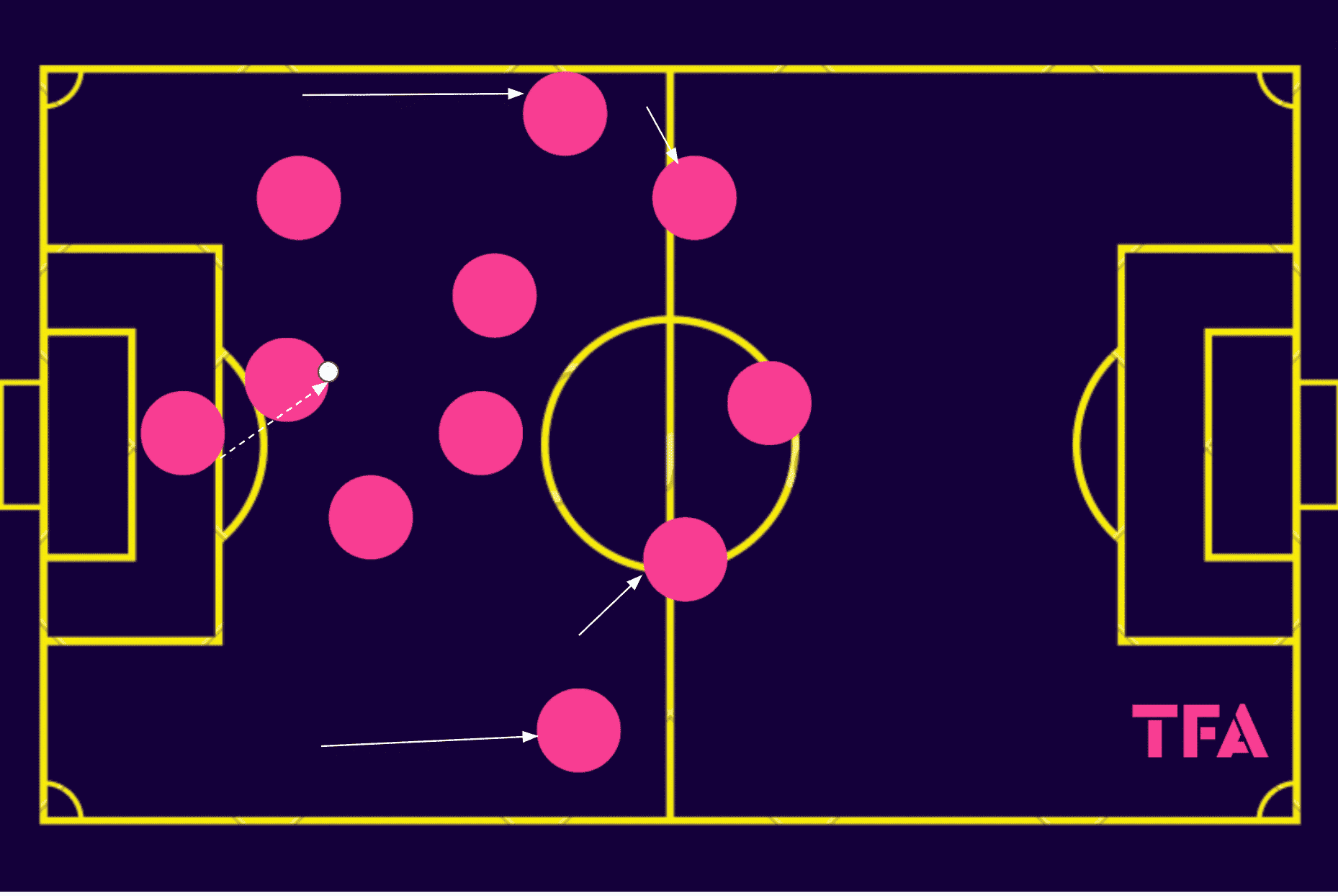
Their middle centre-back would sit just in front of the goalkeeper, providing an easy short passing option.
The other two centre-backs would be positioned just on either side of that middle one, with the central midfield duo placed just in front of them, forming a 3-2 base structure in the middle of the park.
In possession phases, the wing-backs would advance on either side while the wingers would invert to support the centre-forward, creating a five-man forward line and overall 3-2-5 structure of sorts.
Reggiana ended the 2023/24 Serie B campaign with the highest passing rate (passes per minute of possession) in the second tier with 15.0.
They also made the sixth-most passes per 90 (390.73) in Serie B last term.
However, while they made lots of passes in a short time period, they frequently struggled to generate effective progressive passing options, which is where their attack often faltered.
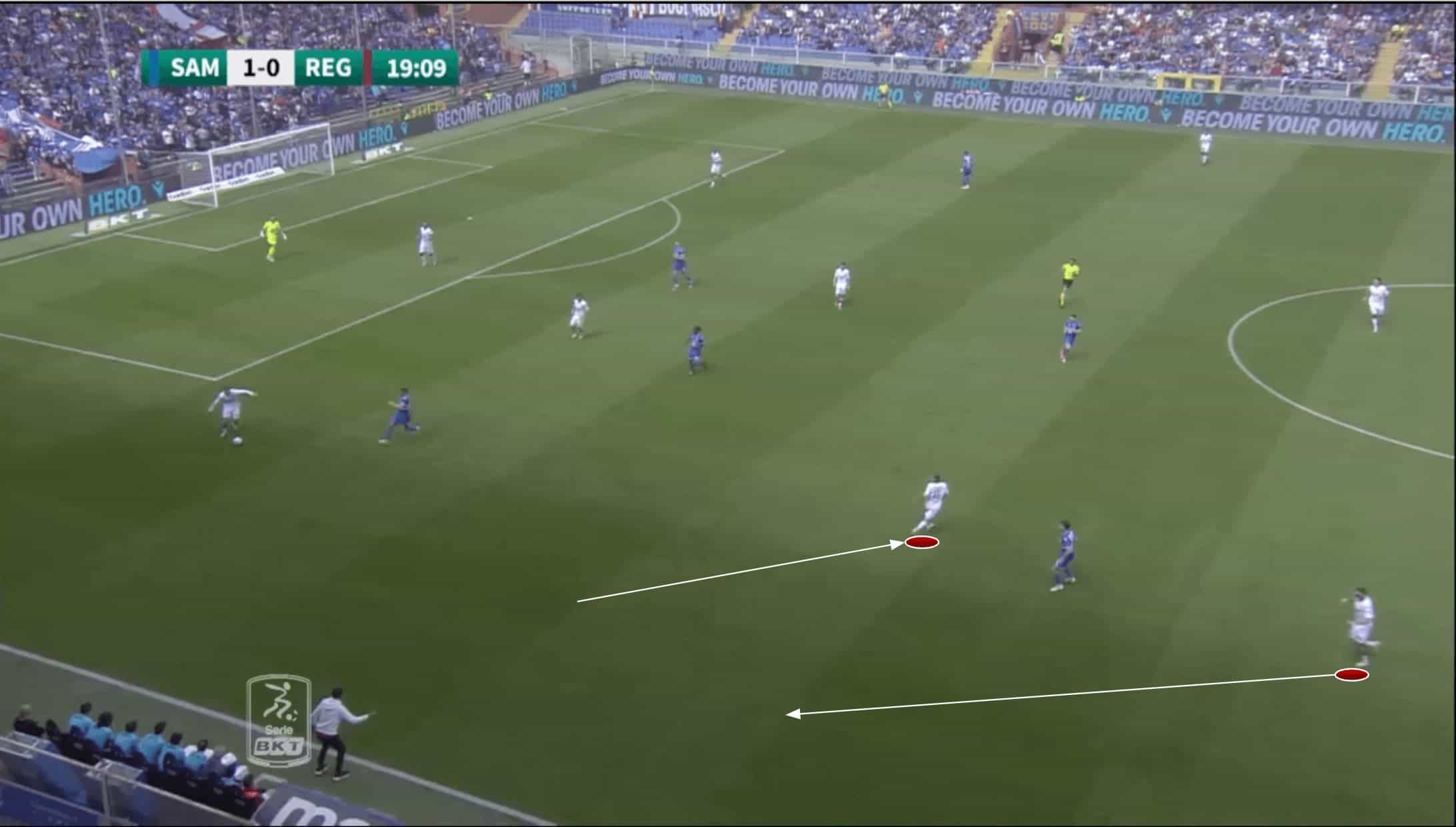
Figure 2 shows an example of one technique Nesta’s side often tried to use to generate a free man upfield for those positioned deep to pick out — rotations between the winger and wing-back, aiming to either create a free man in the wide area or in the half-space through some quick positional interchange in the ball progression phase.
However, this also relies on the deep ball carrier’s vision to pick them out.
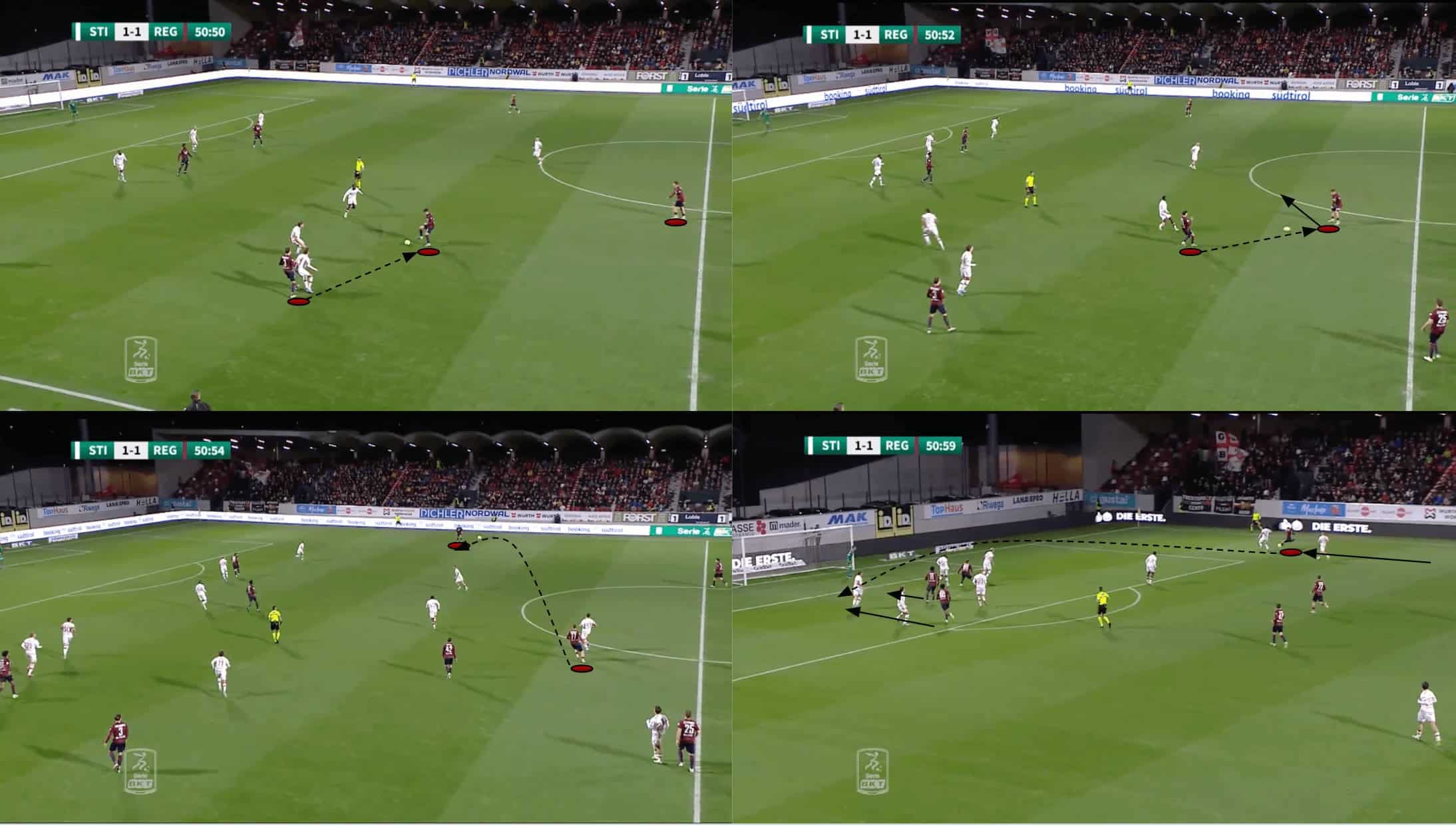
Moving on from build-up and ball progression into the third phase of in-possession play, the chance creation phase, figure 3 shows an example of how Nesta’s side often tried to overload one side of the pitch to isolate a free man with the opposition full-back on the opposite side of the pitch via a quick switch of play.
Here, it’s right wing-back Riccardo Fiamozzi receiving in space on the wing from where he can advance into a crossing position and put an inviting ball in for his central teammates to attack.
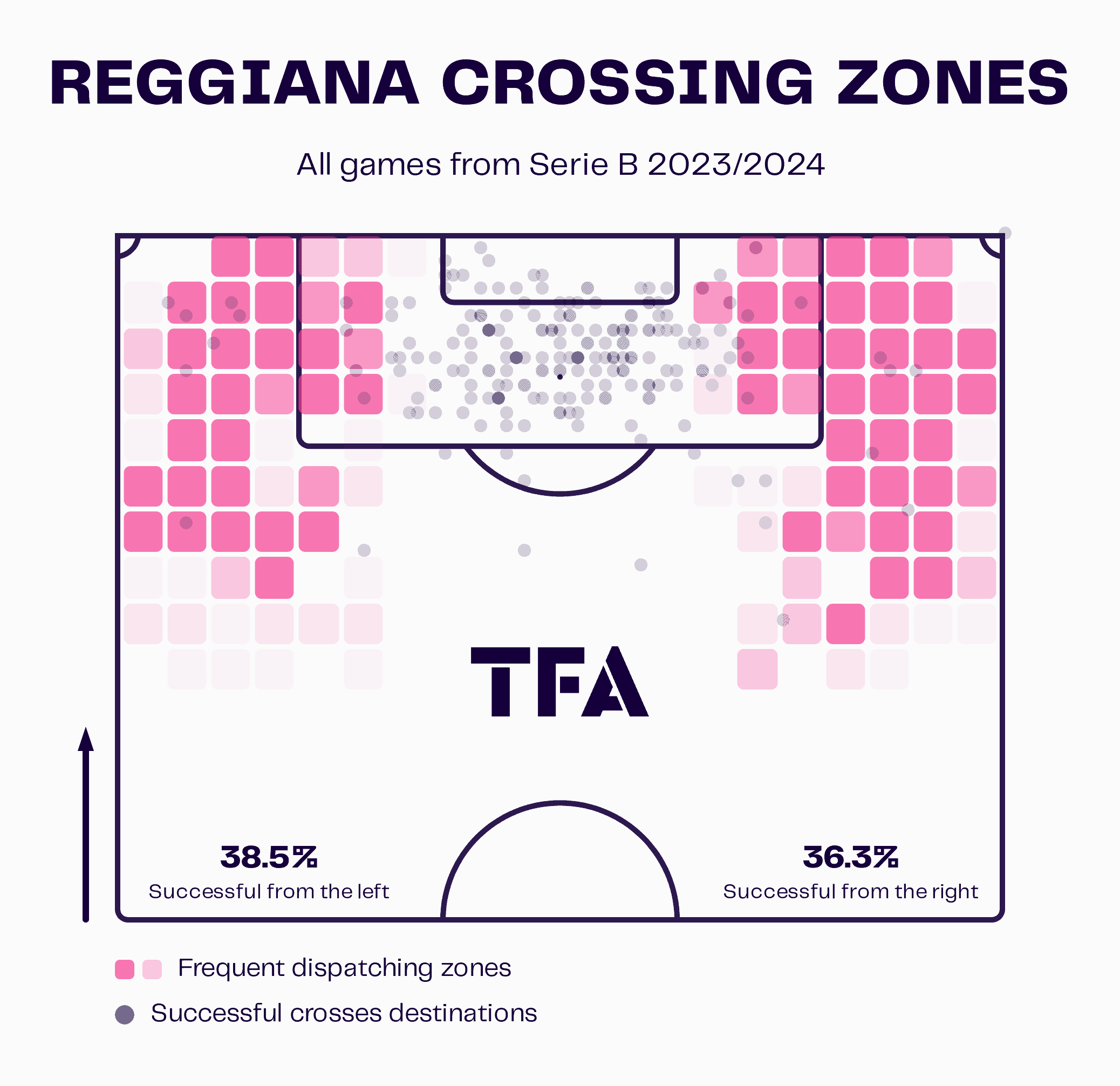
Reggiana’s wing play was crucial to any attacking success they had last season, as were set plays.
They created a lot through their crossing, with plenty of balls sent into the box from relatively deep/wide positions as well as from more advanced areas of the pitch closer to the byline.
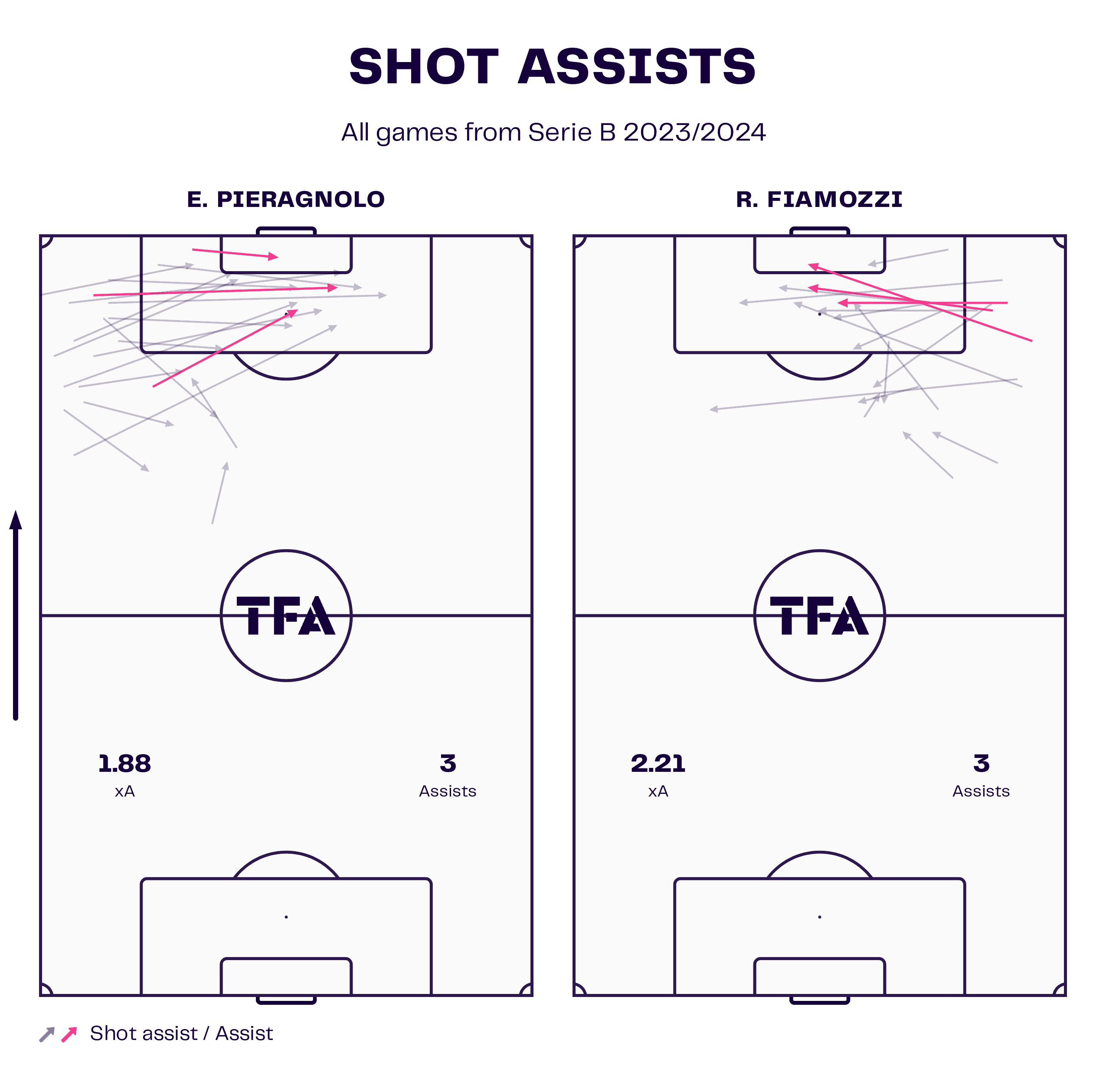
The 31-year-old Fiamozzi was Reggiana’s primary wing-back last term, while 21-year-old Edoardo Pieragnolo held down the left wing-back position during a loan spell from Sassuolo.
The two wing-backs were two of Reggiana’s primary creators last season, with crosses from the wings playing a key role in their contribution to the team.
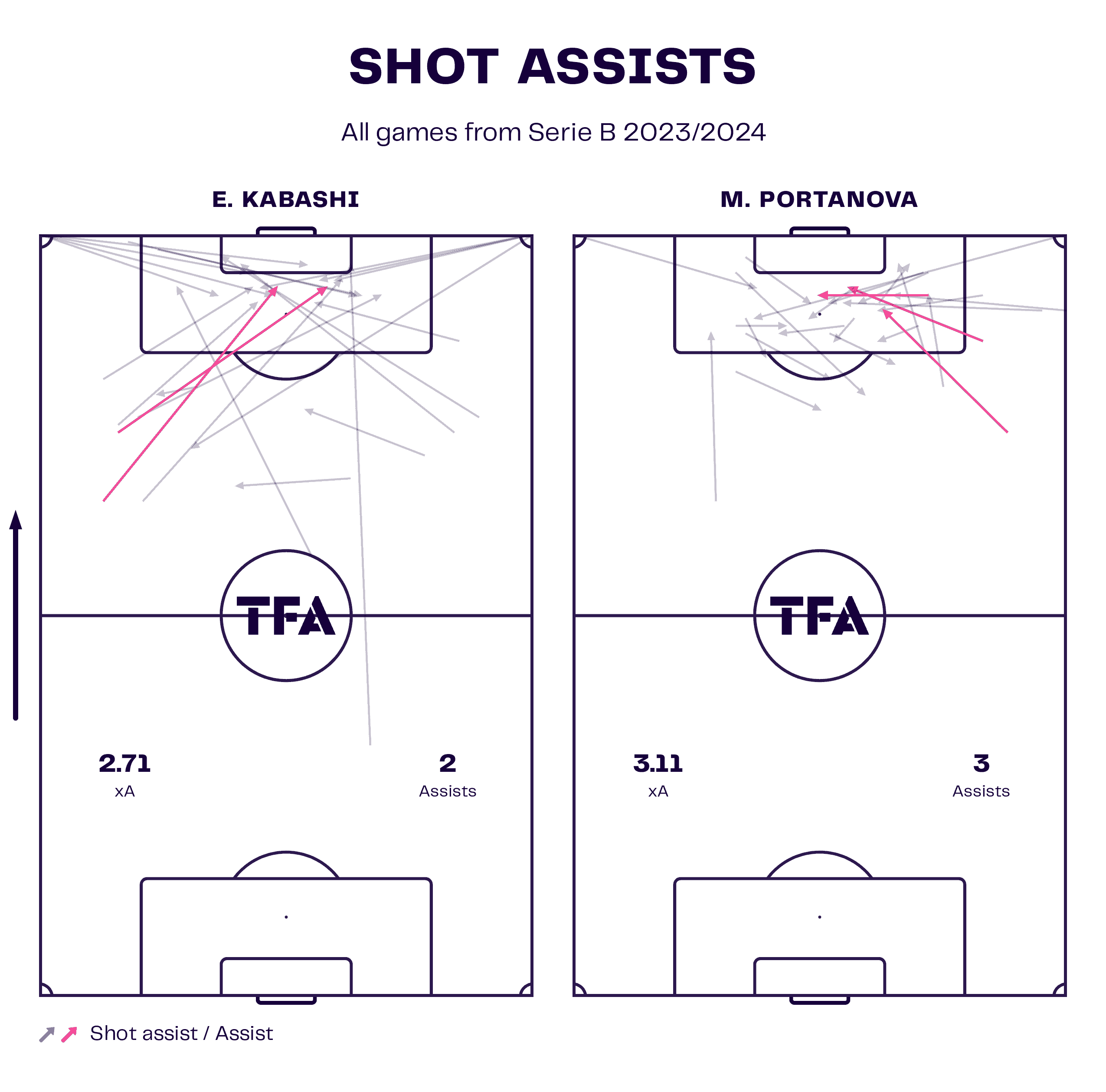
Kabashi often played as a central midfielder for Reggiana last term, while Portanova sometimes played centrally, in addition to being deployed on the wings at times.
Again, these two were key creative forces for Nesta’s side in 2023/24, with many of their chances also coming via the wings despite their central roles.
This points to the wide areas being incredibly important for Reggiana in 2023/24, if not overly important, with Nesta’s side struggling to create much through the very centre of the pitch.
Time on the ball is highly valuable thanks to the quality of chances that can come from there.
Nesta would undoubtedly have liked to see his side generate more chances through the middle of the park, but his side struggled to find enough time and space in these areas.
This was partly due to a lack of movement from those positioned there at times and partly due to players lacking the necessary vision to pick out those positioned centrally with safe and accurate progressive passes.
The 48-year-old coach will hope to get more out of his Monza side in terms of central penetration in 2024/25.
If he fails to do so, this could raise questions about his abilities.
Out of possession
As mentioned previously, Reggiana’s out-of-possession shape was more of a 5-4-1 last term, with the wing-backs and wingers dropping deeper without the ball.
We see an example of how this shape typically looked during the mid-block phase in figure 6.
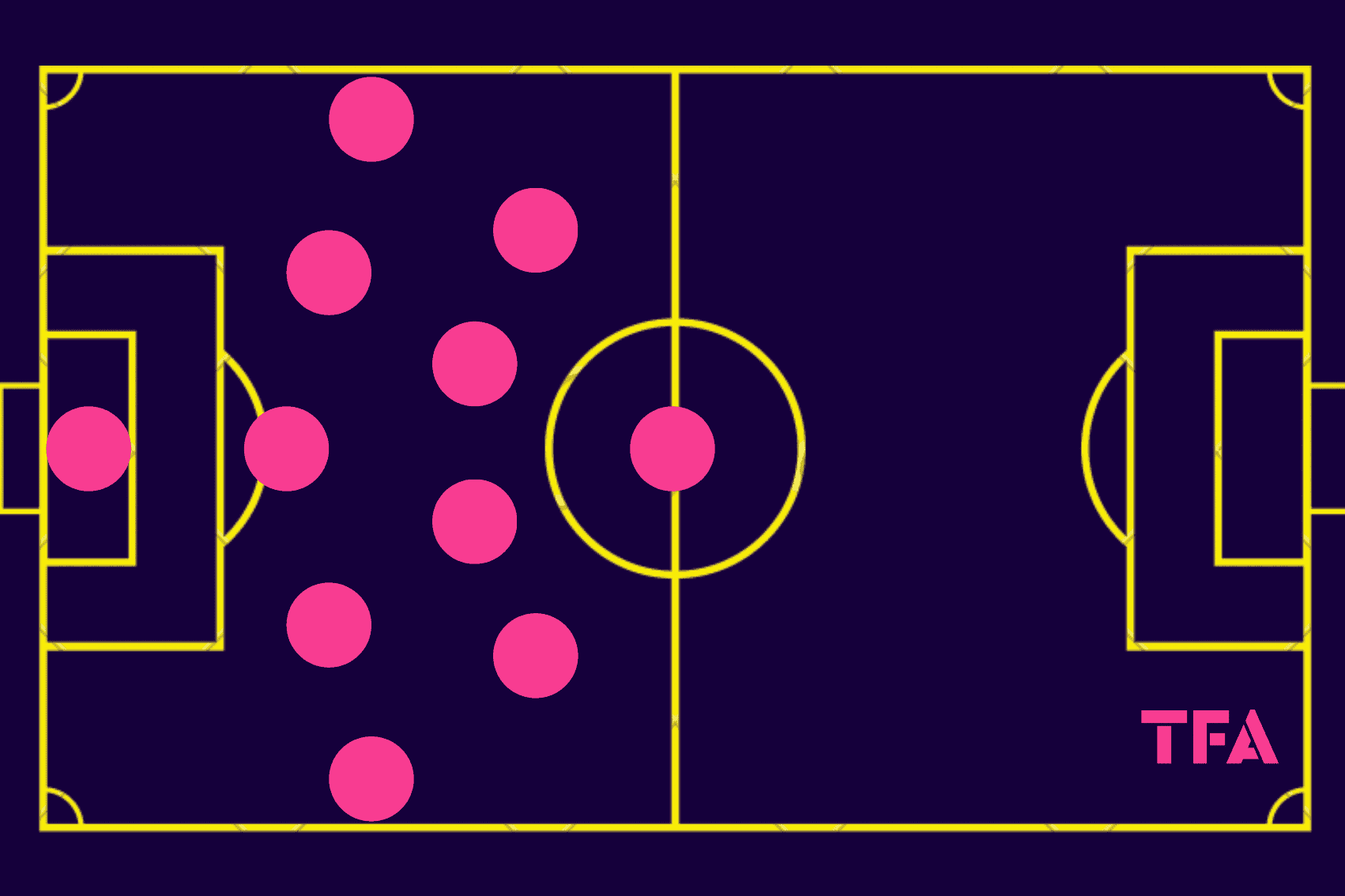
We’ll now see an example of this shape in action during the mid-block phase in which Nesta’s side frequently defended during the 2023/24 campaign in figure 7.
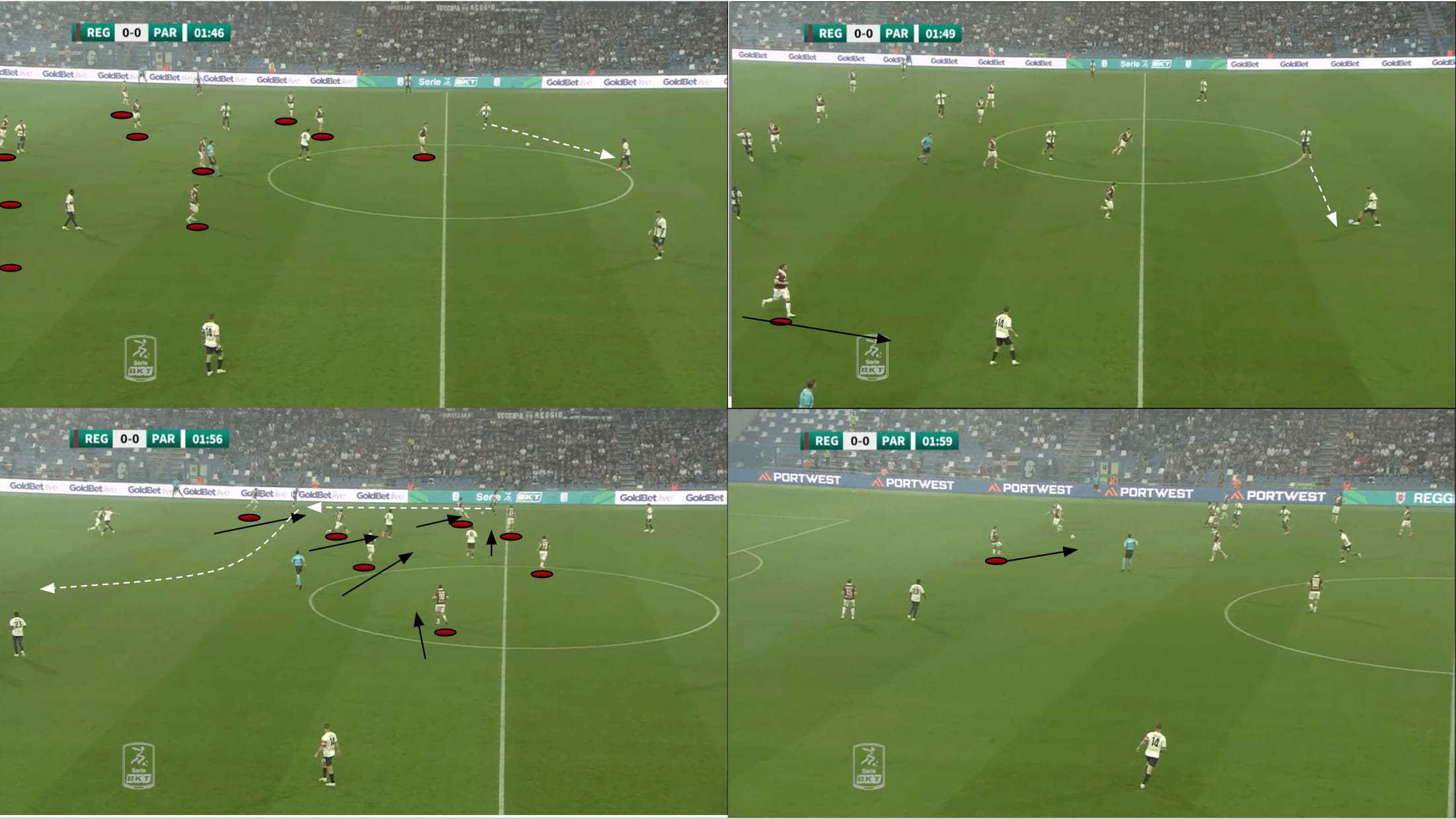
One notable thing about Reggiana’s defensive shape last term, as we turn our attention to the top-left image of Figure 8, is how the wingers sit very narrow.
This remains the case as the opposition threatens to play the ball out to their free winger in the top-right image, with the wing-back advancing to cover that option rather than the winger moving out.
They typically stayed central, congesting those valuable zones in the middle of the park to deny the opposition an opportunity to play through there while remaining horizontally compact with the rest of the midfield so that if the ball was played out wide on the side where more Reggiana bodies are present, as we see in the bottom-left image of figure 8, they could comfortably increase their pressing intensity and ultimately force the error which leads to a turnover in possession, as displayed by the bottom two images of figure 8 — concluding a typical example of Reggiana’s defensive play in the mid-block from 2023/24.
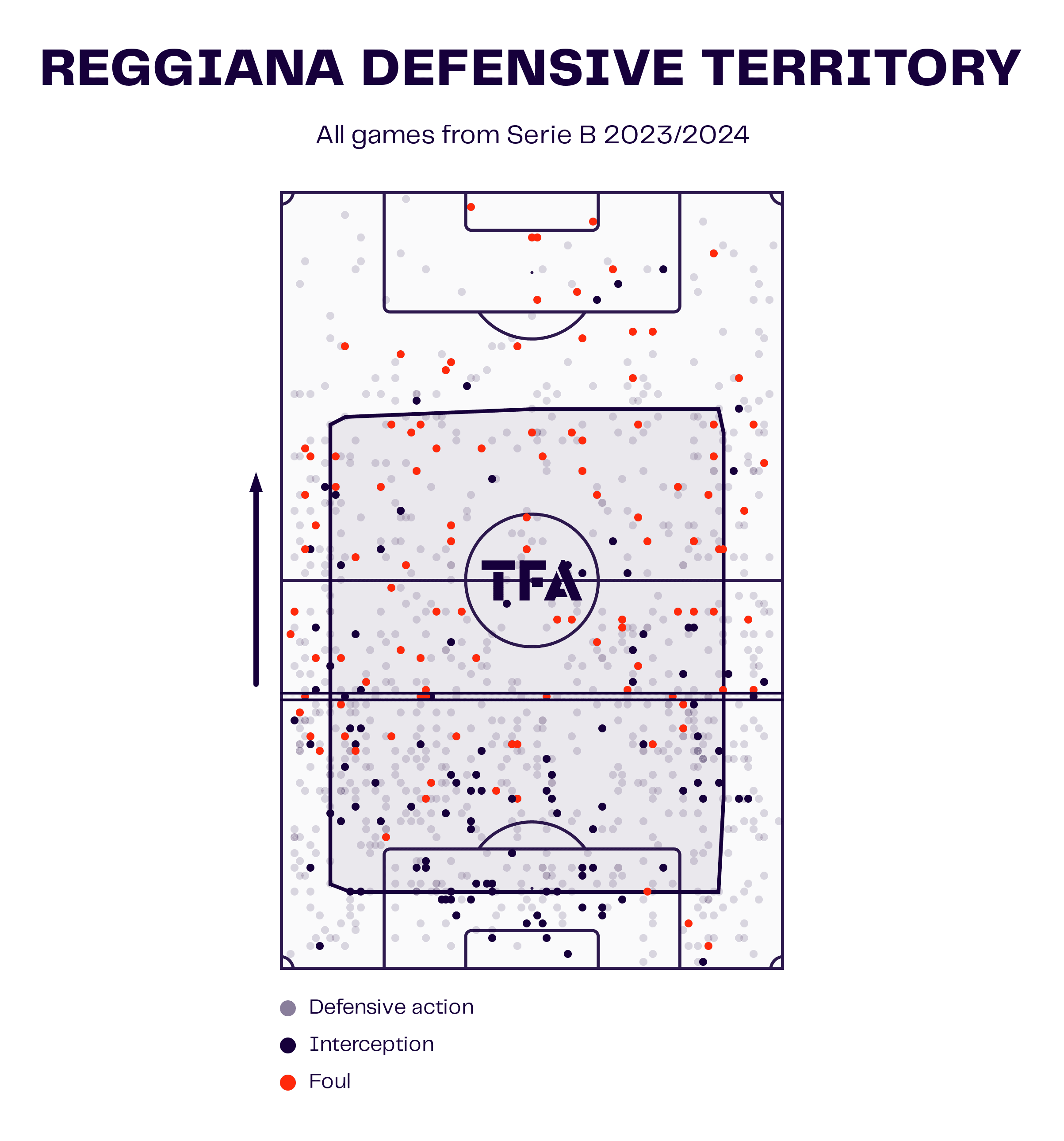
As displayed by their defensive territory map from 2023/24, Reggiana’s average defensive line height was not very high; they defended from a relatively low starting point last term, which is indicative of their tendency to set up in the 5-4-1 mid-block and avoid engaging the opposition until they’d crossed into Reggiana’s half of the pitch as figure 8 provides one example of.
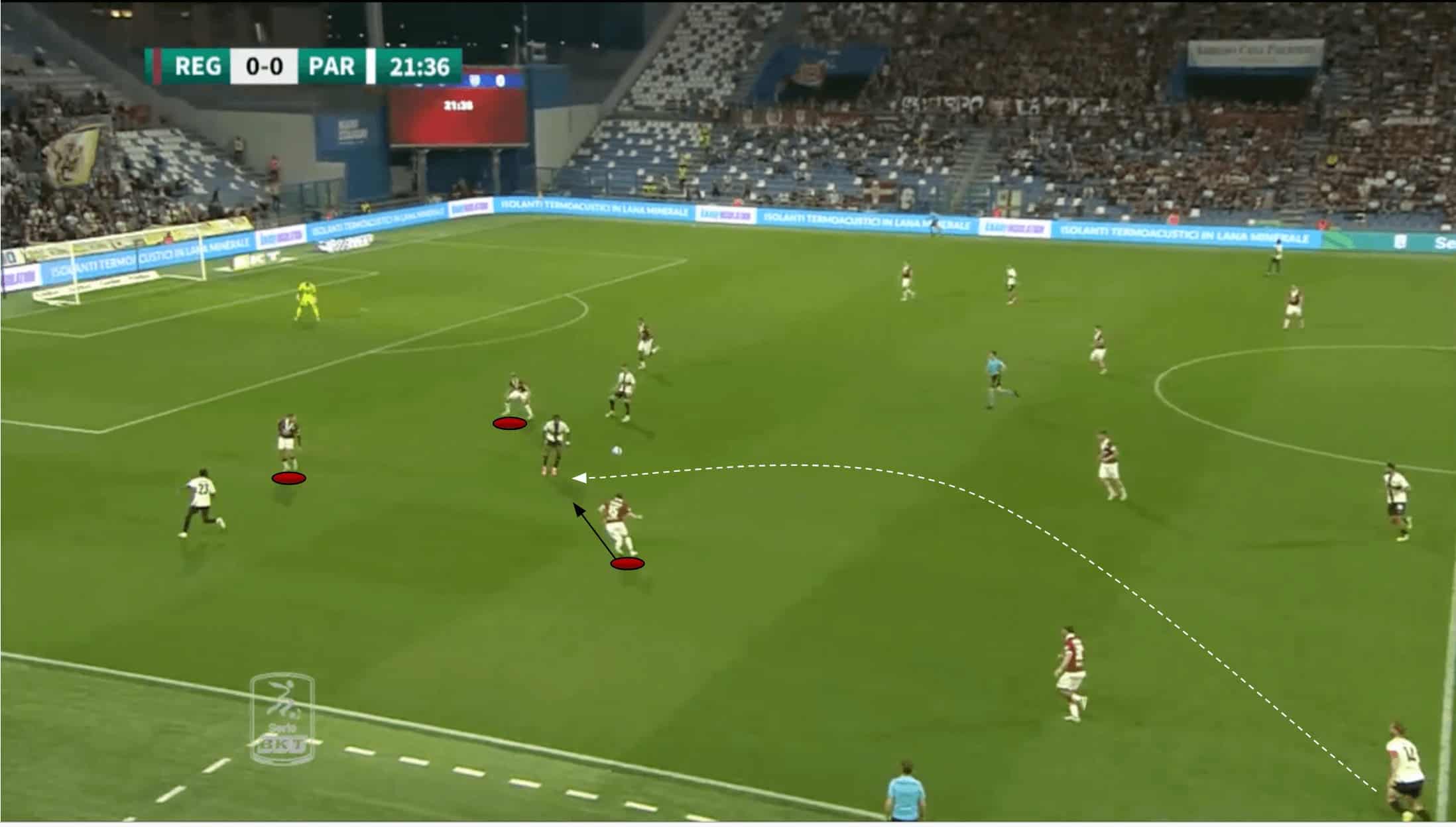
In addition to having a relatively low defensive line height, Reggiana’s centre-backs typically didn’t defend aggressively, preferring to protect the space behind them rather than the space in front of them.
At times, a central defender would step out, knowing they had the cover of two more centre-backs behind them, but in general, they were more passive defenders.
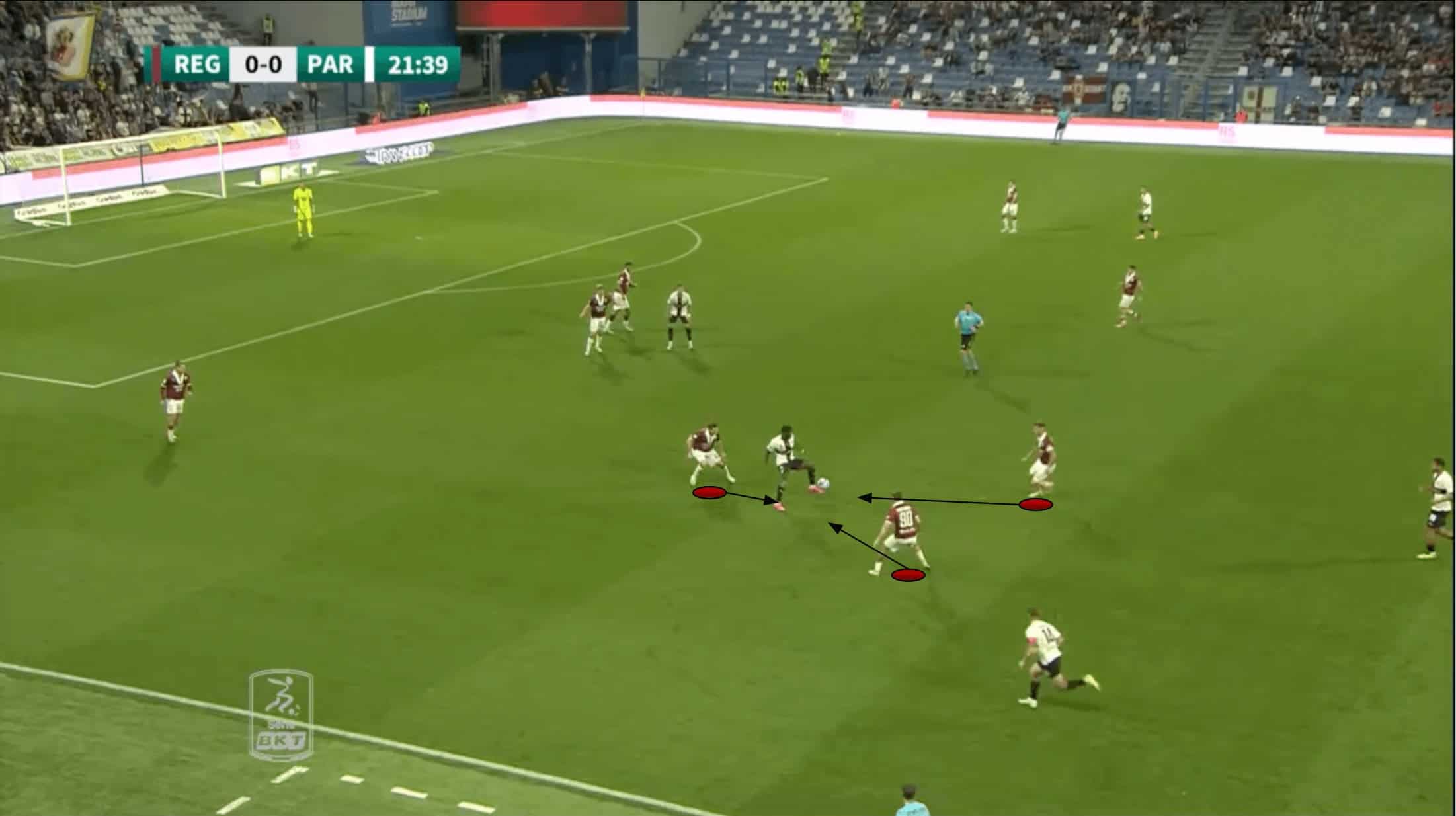
Instead, the job of pressing the receiver in front of the backline fell to the wing-backs, wingers and central midfielders, who could come from out-to-in or drop from a more advanced position to hassle the opposition ball carrier and either force them into a mistake or create an opportunity to perform a successful challenge.
Conclusion
To conclude this tactical analysis, Nesta’s suitability for a job in Serie A is very much still up for debate.
His achievement of comfortably keeping Reggiana in Serie B last season is highly respectable when taking the club’s recent history into account but is not as impressive when considering their wage bill and relative quality of players.
Still, there are similarities between Nesta’s performance with Reggiana and Palladino’s with Monza, albeit achieved with a very different style of play to the seemingly more ball-dominant and attacking Palladino, which could take time to implement with his new club, unless he alters that approach for next term.
Defensively, there was a lot to like about the organisation and structure to Nesta’s Reggiana last term, but in possession, they left a lot to be desired.
Whether or not he can change that with Monza next season could make a big difference in how he’s perceived in his first shot at a Serie A management job.





Comments